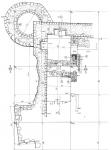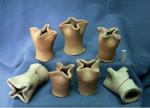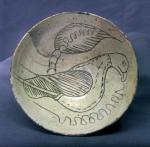Summary (English)
ARCHAEOLOGICAL EXPLORATIONS NEAR THE VILLAGE OF VODEN (Stefan Bakardzhiev – st_bakarjiev@abv.bg) A sector from the western fortification wall, 18 m long, was explored. The wall was 2.40 m wide and preserved up to 2.90 m in height. Fortification Tower No. 2 was discovered with rectangular layout and 3.40 m by 6.85 m in size. Its walls were 85 – 90 cm wide, built of roughly-cut stones bonded with mortar. Bricks, roof-tiles and terracotta tubes from architectural decoration were found inside the tower. The explorations of Building No. 1, located in the northwestern corner of the fortress, were completed. The building was 4.50 m by 4.20 m in size with two entrances, 90 cm and 1.50 m wide. There were two niches in the western and the northern fortification wall just against the two entrances of the building. The western niche was 1.30 m wide and 1.10 m deep and the northern niche was 1.75 m wide and 1 m deep. The explorations of Building No. 2, located at 1.20 m to the south of Building No. 1 and adjoining the western fortification wall, continued. The northern entrance of Building No. 2 was 95 cm wide and was situated against the southern entrance of Building No. 1. Building No. 2 had several parallel rooms arranged in a line. Room A was explored, 4.35 m by 4.25 m in size. It had an entrance on the southern wall, 90 cm wide, leading towards Room B. The stratigraphy of the sites consisted of an upper stratum of debris (roughly-cut stones, fragmentary mortar and building ceramics) and a lower stratum 50 cm thick, containing fragmentary mortar, charcoal and sherds. Thaces from fire that ended the occupation of the fortress were documented. The related finds (a coin of Manuel I Komnenos, arrowheads and ceramic vessels) allow us to conclude that the fortress was burned at the end of the 12th century.
- Stefan Bakardzhiev - Museum of History - Yambol
Director
Team
Research Body
- Museum of History - Yambol






![Download [PDF]](/excavation/skins/fasti/images/results/download_sml.png)

